Algarve:
He’s a photographer, who cherishes the Algarve weather and relates to the region like a fine piece of filigree jewellery. His name is Filipe da Palma. What drives him, he confesses, is the opportunity to go out and take photographs… and to feel everything around him. “This nourishes the deeper side of me, it’s what keeps me sane.” He does this because he feels the need to share the beautiful, but also the ugly, something that lies between identity and reality: “I also like to show the wounded Algarve, the scars and small tumours that are scattered throughout the region.” With a very clear vision of the region’s rich culture and heritage, Filipe da Palma treasures the collection of images that he has built up over 20 years. A forgotten Algarve that, according to him, we need to own with pride. Without nostalgia and with a warning: there are some pearls in the necklace that are still alive, whose memories Filipe insists on safeguarding and re-awakening.
“They arrive by plane or by boat and, as soon as they set foot on land, they get on the bus to Sagres or Monchique.” This is what the traveller in search of the Algarve does. Faced with such a vast urban sprawl, and with such a limited range of public transport services, there aren’t many options available, the photographer explains.
“Today we are losing more and more, and the machine itself wants more and more. Transport services are chosen on a purely economic basis. And we have the big tour operators that are very cheap, making profits of millions, many, many millions … nobody even talks about putting a brake on all this and, as long as the machine continues to be oiled by these millions, mainly concentrated in the hands of the owners, while generating some money to pay for the damage, people keep turning a blind eye,” he says.
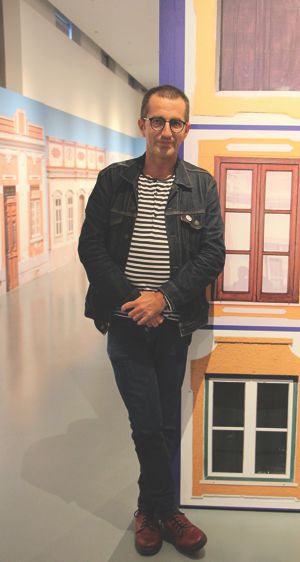 “Just as people in the 1960s were already warning about the growth of tourism in the Algarve and its destruction (Sophia de Mello Breyner Andresen was just one of these people), today the same is happening with the question of transport, planes and boats. There are studies that prove that both planes and boats are a terrible thing, but everyone closes their eyes and ears, voicing no opinion. And everyone sweeps the issue under the carpet and wants to increase the flow of tourism more and more.”
“Just as people in the 1960s were already warning about the growth of tourism in the Algarve and its destruction (Sophia de Mello Breyner Andresen was just one of these people), today the same is happening with the question of transport, planes and boats. There are studies that prove that both planes and boats are a terrible thing, but everyone closes their eyes and ears, voicing no opinion. And everyone sweeps the issue under the carpet and wants to increase the flow of tourism more and more.”
“I have no solution for this,” he says, with a look of weariness in his eyes. “I don’t believe in this mass tourism, I don’t recognise myself in a strip of coastline that has been completely destroyed in exchange for seasonal work,” he says.
Using the term ‘self-cannibalism’ several times, Filipe da Palma states that “the region has consumed itself by exploiting the most attractive tourist sites, forgetting about the need for their conservation. Now you have to create products, bringing added value to something that already has value in itself.”
Sun and sand “are a safe product,” he says, “but we’ve already seen where this leads us. When you base your economy on sand and sun, you don’t empower a region. When tourism comes in a mass form,” he adds, “you have places like the Ria Formosa – a nature reserve – where a never-ending stream of boats will undoubtedly cause serious damage to the park’s community of seahorses and maritime grasslands…”.
And, at the expense of this investment, from time to time, beaches come back to life, thanks to the many tons of sand deposited on the barren shore. The case of the Dona Ana Beach in Lagos, considered one of the most beautiful in the Algarve, particularly touches this Algarvian, born in São Brás de Alportel. “Dona Ana has been violated. They built a pontoon there, fed it artificially, and the sands became totally different. The picture postcard has been destroyed; it no longer exists.”
We challenged Filipe da Palma to picture the 50 years of tourism in the Algarve as a woman. How do you see her, we ask? He smiles, scratching his stubbly beard. “Today the Algarve is a mature woman, but one who has been completely destroyed by life: violated, beaten, defeated. And when we say the Algarve, we’re talking about this coastal fringe, this narrow strip, because there also exists an Algarve to the north of the EN 125. This region has been forgotten about. It’s become depopulated, and the land and houses have not been cared for…”
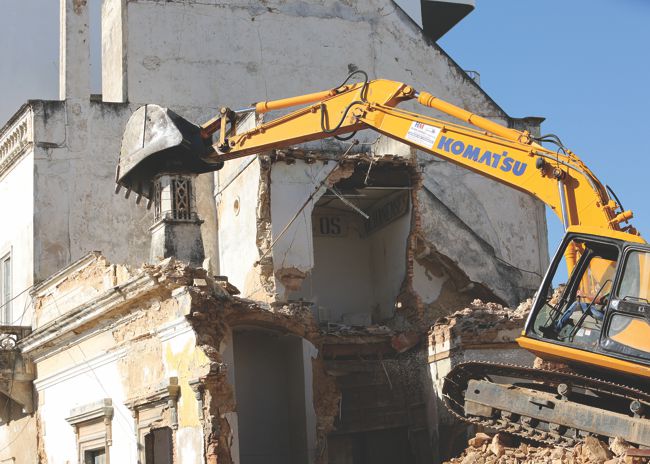
Until a certain point in time, people from the inland regions of the Algarve would migrate both to the Alentejo and to the coast and then they would return. Now, however, “they have stopped doing this; they are settling on the coast, where there are job opportunities and better living conditions,” he says. “And the past has become associated with poverty. Both the food they ate and the homes they lived in are now associated with conditions of extreme hardship, and, when these Algarvians find themselves in a more favourable financial situation, they invest in different types of materials – building materials, food, clothing – because this is what befits the status that they have finally achieved.”
Besides causing this abandonment of the typical way of life and traditional economic activities, tourism also has many other repercussions on communities. “Lisbon, Porto and other cities in the country are now experiencing what the people of the Algarve have been feeling for decades. Renting a house on a yearly basis in the south of the country is an odyssey. Many houses remain empty until the next summer, when crowds of tourists head to the Algarve for their long-awaited beach holidays. If we add to this the difficulty in finding a home, the shortage of schools and insufficient road transport, we can easily understand why it’s so difficult to encourage doctors, nurses, teachers and middle and senior managers to live and stay in the Algarve.”
“And,” he adds, “why do people living in the Algarve have to see increased prices in the supermarket? Where do the millions of euros that the region produces go to? Why is there no return on the wealth produced?”
These are important questions in a region that, in his opinion, is not “an easy one to read. It’s a fantastic region, with an immense diversity. We have vast sandy beaches, and beaches nestling in small coves amid the cliffs; we have the sandstone of Silves – a strip of red rock that runs across the whole Algarve, ending in Sagres, with the ocean as its backdrop; we have the Barrocal region, with its profusion of limestone; the Serra, full of shale; Monchique, with foiaite, a type of granite which is the source of a mineral water that is unique in the world. All of this is accompanied by unique flora, fauna and cuisine.”
But Filipe da Palma rules out the nostalgic idea of a return to the past. “I don’t think the Algarve is anything like it was in the 1930s or 1940s. I’m interested in exploring all its different aspects, including the ugly side. These changes are not just taking place here, they’re also happening in southern Spain, Italy, France or Ireland. All the uniqueness of a country is vanishing. There is no longer any street that corresponds to this vision of an old Algarve,” he says. And he gives Olinda, in Brazil, as an example, a small place where the heritage is preserved and listed, “and that could well be a street in the Algarve.”

He confesses, however, that it’s in the Algarve’s eastern region, the Sotavento, that the greatest gems are still to be found. “What gives me the most pleasure is to photograph Olhão, Tavira, Vila Real de Santo António… I particularly like Olhão. The whole of the Sotavento was left in a kind of bubble, completely forgotten about, which allowed it to preserve a number of examples of its old architectural style. Today, these areas offer a wealth that the western Barlavento can’t offer any more – but once had.” For Filipe da Palma, maintaining these features requires “sensitivity” and “courageous action on the part of the municipalities; we mustn’t hesitate in finding a way forward, following certain parameters and obeying certain rules in its design.”
“In Olhão, Tavira or Vila Real de Santo António, we find a kind of traveller who no longer exists in Portimão, Lagos or Albufeira, but who could have existed there in the past,” he says. “This sort of tourist isn’t worried about the weather and wants to discover details, wants to walk the streets, cross the Ria Formosa…”.
What kind of traveller should come to the Algarve?
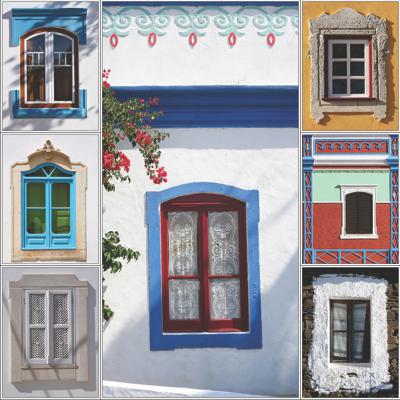
We ask him: “What kind of tourist would you like to find in the region?” Filipe speaks slowly: “Someone who comes to discover the other, searching for the identity of a people – where they live, how they live, what they enjoy doing… a tourist who is looking for what is genuine, not a tourist who asks where there is an Irish pub, a McDonald’s or a hypermarket… ”.
“In fact, I don’t see people who come to the Algarve in order to get to know it throwing cigarette ends on the ground,” he continues, “I see them being more concerned about where they are going to eat – they want to find out about the local cuisine, the arts and crafts of the region… they want to get to know the destination. I don’t see anything very bad coming from this type of visitor. We won’t have thousands of people walking or bird watching; I don’t see Chinese shops selling cheap souvenirs in Mealha or Cachopo, but there are weavers there. There are dynamic people who know how to make things and for whom it’s important to experience something other than receiving coachloads of tourists every hour, like in Piódão.”
“And how can this be done?” we ask. “Do any of these people know the pleasure of eating wild boar in Cachopo, a good chick-pea stew, the pleasure of drinking a good wine or a homemade medronho… We aren’t getting this across to them. We need to invest in the uniqueness that the region has to offer, and to provide it for free, in a holistic way, in the form of geology, flora, fauna…”.
To cherish and safeguard what’s left
A few years ago, like many foreigners, Filipe da Palma bought a small house in Mealha, near Cachopo, where he has his little refuge today. This place has the largest number of circular stone barns with conical thatched roofs (rye straw), very similar to the ancient castros or hill forts that are found more frequently in the north of Portugal, but smaller. The site, recovered by IN LOCO, mainly attracts foreigners. For Felipe, this is an obsolete heritage. “In the village of Mealha,” he estimates, “the youngest person must be around 60 – no longer using the barns to store farm implements or hay. Although they’ve been restored, the thatch has already blown away and what remains is a bare skeleton.” He asks: “To what extent does it make sense to recover heritage that has lost its utilitarian value and now only has a scenic effect?”

Following this line of thought, the photographer warns that within ten years many of the activities that no longer have a utilitarian value will have been lost. “It doesn’t make sense anymore,” he says. “What sense is there in preserving the carter’s trade, what sense is there in continuing to make carts, if there aren’t any people left with land and mules, who farm in this way?” he asks. For him, this craft is coming to an inevitable end.
And purchasing products whose utilitarian value has been lost is always a romantic, even nostalgic, affair. “The TASA [Ancestral Techniques Current Solutions – Loulé] project,” he adds, “has been doing some work to stimulate and recover the most emblematic economic activities with a series of artisans. It’s a tiny business, but it’s what you can do when faced with the present situation and the consumption of items that have already lost their usefulness.”
In his collection of photographs, therefore, there are records of the last lime kilns in the region, the sheds of Santa Catarina da Fonte do Bispo (whose floors, tiles and bricks are made from local clay), local articles made of palm and esparto, tinsmith’s shops and hydraulic cement tiles, but also other economic activities such as the production of artisanal salt and fleur de sel sea salt, fishing, confectionery or the communal slaughtering of pigs. These are the traditions of a united and single Algarve, shared experiences that are found everywhere from the inland regions down to the coast, where the sacred and the profane still coexist alongside one another.
Platbands(1) – A Passion
But it’s when we talk about popular architectural heritage that Filipe da Palma’s eyes light up. Safeguarding and enhancing the value of buildings through their public listing as protected architecture is his great mission in life.
He walks slowly as we speak. In front of him is a street in which five separate municipalities are represented. We are in Portimão Museum, where there is a photography exhibition entitled: “From my window do I still see the Algarve?” This is a pertinent question, which is answered by the photographs exhibited here since 18 May. Lining that street are the photographed façades of houses that show that, after all, the Algarve is not white. The relief of the platbands, the doors, windows, chimneys, roofs, roof terraces, balustrades, and a 16th-century Manueline window that the museum has in its keeping and which originates from the former “Villa Nova de Portimão”, fill the space with colour. “Not everything was painted white. To do so would have been to let things die, living only in the shadows and not allowing things to stand out,” he says.
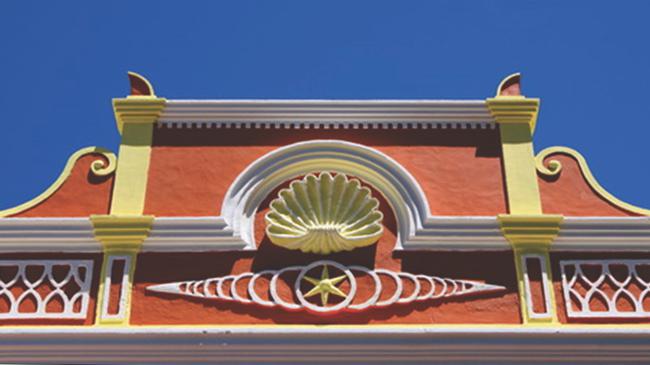
Despite this, “the Algarve never dissociated itself from the white image that was instituted by the Estado Novo. Even after 25 April, the school of architects were unsure how to deal with the chimney, the platband, the question of colour. They never knew how to interpret this crazy wealth of shapes, symbols, colours and fantasies – even ostentatiousness – that are found in the platband,” he explains.
The photographer recalls that “platbands were promoted at council meetings and in the legislation. The construction of a small wall at the top of the façade made it possible to hide the guttering at the back, from where rainwater would then flow down to the street or even into a tank. “But,” he explains, “nothing obliged people to display such great richness, individuality and uniqueness in the platband. They project colours and shapes out into the street and, like the chimneys, they are all unique master works.”
In one of his articles for the newspaper Sulinformação, the photographer passionately describes this unique aspect of traditional southern architecture. “Functioning as a scenic screen, they draw on several influences. Consequently, they are all colourful and multifaceted – with some of them displaying Art Deco motifs, others naïf motifs, others simple geometrical patterns, others motifs with various esoteric meanings, and yet others ornate baroque motifs. No two examples are the same, so that the platband has reached its greatest expression in the Algarve.”
His passion for platbands came to him through a book, “The Algarve Revisited” by Jacinto Palma Dias, with whom the photographer has himself published a work: “The Algarve in 3D”. Since then, Filipe da Palma has been collecting, from the Barlavento to the Sotavento and from the coast to the mountains, small images of what still endures. Perhaps this is why, when we ask him which symbols he would choose to promote the Algarve today, he doesn’t hesitate in his answer: “the chimney, the platband and the colour in popular architecture.”
“I see a niche market in popular architecture,” confesses the photographer, whom some architects have been asking for guided tours. “Walking through Luz de Tavira is an amazing experience. Slap bang in the middle of the EN 125, it is the place where most platbands are to be found in the same street,” he explains. “It’s much more beautiful than strolling past the façades of modern detached houses, which all look the same, all straight and proper. Diversity and colour enrich us,” he says enthusiastically.
Many of these platbands can be seen in the picture postcards that Filipe da Palma publishes in the social media and whose patterns have been reinterpreted in other artwork: textiles, pottery, articles made of cork, printing. “What gives me most pleasure is the fact that the word platband is now being bandied about and arousing interest, entering into the vocabulary of people in their daily lives,” he explains.
It is therefore with some sadness that he asks: “Why is it that the Algarve’s popular heritage is not considered heritage in the eyes of the law?”. “At the Regional Directorate for Heritage, the buildings that are listed are generally erudite in nature – military, religious, industrial or architectural heritage, linked to the construction of new neighbourhoods after 25 April. As far as the popular heritage is concerned, apart from those buildings that are not contained inside walls or within the protected area of a monument, there are only two or three cases listed,” he says indignantly.
There is no doubt that people identify with the Algarvian chimney, the platband, the window and the region’s popular architecture, “but in practical terms there is nothing that lists or protects these buildings, nor anything that promotes them for their intrinsic value,” he says.
In order to make proposals for the listing of these buildings, Filipe de Palma is now trying to create a task force made up of people from different areas of interest. “We need to raise each other’s awareness to the fact that we are rich, and that we have a heritage. Heritage is not just a church, not just a castle, fort or archaeological site… We have a heritage that is crumbling day by day. Something must be done to reverse the homogeneity of economic growth and its concrete constructions.”
(1) – An architectural term used to describe a horizontal band framing the upper part of a building, which is designed to conceal the guttering that collects the rainwater from the roof and takes it down to the street or to a well.
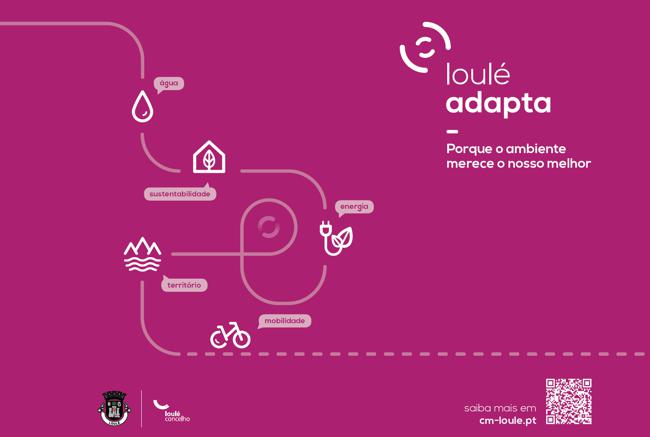
 Eco123 Revista da Economia e Ecologia
Eco123 Revista da Economia e Ecologia

